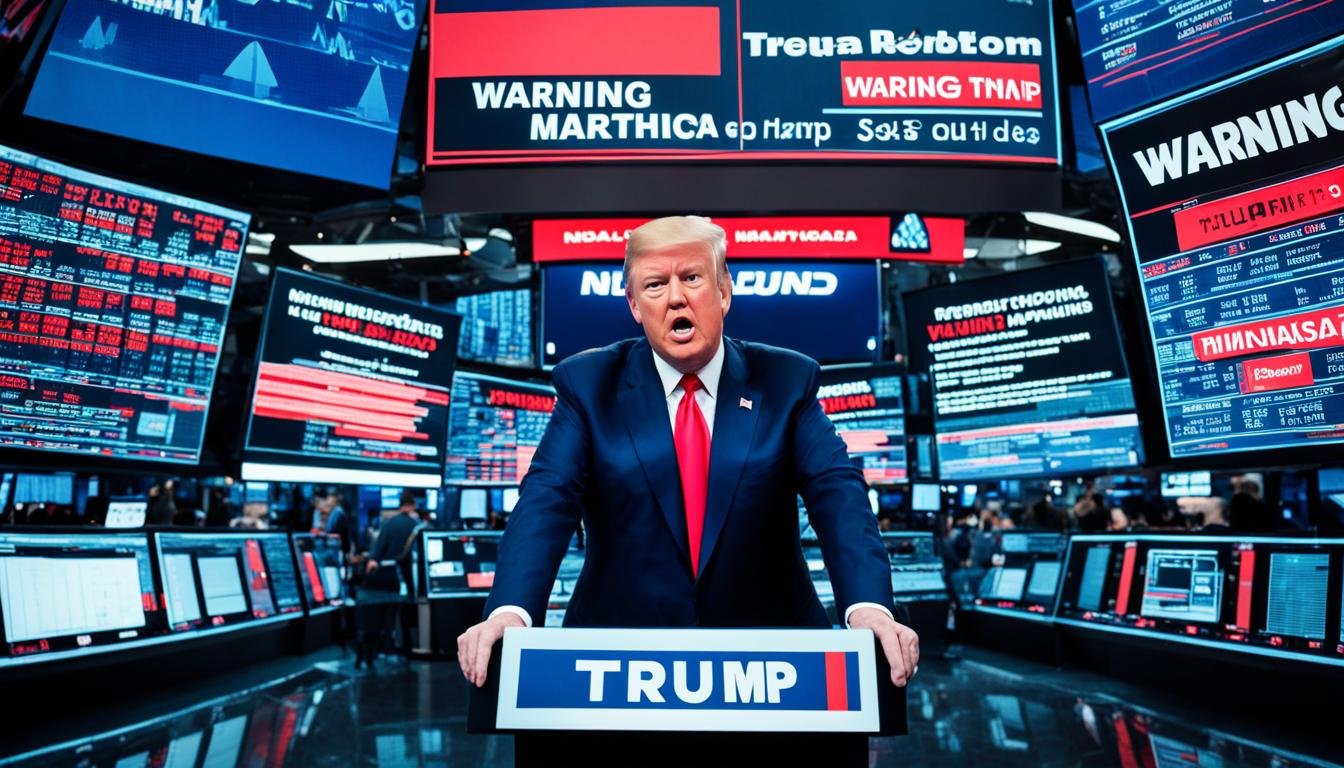IMF’s Gopinath says high U.S. deficits fueling growth, higher interest rates
When it comes to the state of the U.S. economy, one prominent voice has emerged in the financial news arena—IMF’s Gopinath. Gopinath’s analysis sheds light on the crucial role that high U.S. deficits play in fueling economic growth and, at the same time, driving up interest rates. These findings have ignited discussions among economists and policymakers, highlighting the need for sustainable fiscal policies to navigate the challenges ahead.
As the United States grapples with high deficits, the impact on economic growth cannot be ignored. Increased government spending, spurred on by these deficits, can stimulate demand, leading to job creation and a boost in consumer spending. This, in turn, contributes to overall economic expansion. However, the long-term effects of prolonged deficits need to be carefully considered.
One significant consequence of high deficits is their impact on interest rates. As Gopinath emphasizes, borrowing more to finance deficits raises the demand for credit, putting upward pressure on interest rates. These higher interest rates can discourage private investments and borrowing, potentially slowing down economic growth.
The global implications of high U.S. deficits are equally critical. As the world’s largest economy, changes in U.S. fiscal policy reverberate throughout the international landscape. The continued presence of high deficits can lead to a stronger U.S. dollar, disrupting trade balances and creating challenges for global competitiveness.
Gopinath’s analysis examines the U.S. deficit situation with a discerning eye. She underscores the need for responsible fiscal management to achieve long-term economic stability. Reducing deficits through prudent policies becomes paramount in addressing potential risks and uncertainties in the global economy.
However, high U.S. deficits are not without risks. The possibility of a debt crisis, increased borrowing costs, and reduced public confidence in the economy are among the challenges that policymakers must confront. Effectively managing deficits requires a balanced approach that prioritizes short-term stimulus while ensuring a sustainable long-term trajectory.
In conclusion, Gopinath’s analysis of high U.S. deficits serves as a reminder of the intricate relationship between deficits, economic growth, and interest rates. While deficits can fuel growth, they also pose risks and contribute to higher interest rates. Navigating these dynamics requires a delicate balance and careful consideration of sustainable fiscal policies to promote long-term prosperity.
The Impact of High U.S. Deficits on Economic Growth
High U.S. deficits can have a significant impact on economic growth. When the government spends more than it earns in revenue, it injects money into the economy, stimulating demand and driving expansion. This increased government spending can lead to job creation, increased consumer spending, and overall economic growth.
For example, during times of recession or economic downturns, high U.S. deficits can be used as a tool to boost the economy. The government can increase spending on infrastructure projects, social programs, and other initiatives that create jobs and stimulate economic activity. This injection of funds can help revive industries, increase consumer confidence, and foster an environment conducive to growth.
Furthermore, high U.S. deficits can have a multiplier effect on the economy. As government spending increases, businesses experience increased demand for their products or services. This, in turn, encourages businesses to expand their operations, invest in capital, and hire more employees. The resulting increase in economic activity further contributes to economic growth.
Despite the potential benefits, it is important to note that prolonged deficits can also have negative consequences. One of the main concerns is the risk of inflation. When the government injects large amounts of money into the economy, it can lead to an increase in prices as the supply of goods and services struggles to keep up with the demand. This rise in inflation erodes the purchasing power of consumers and can be detrimental to economic stability.
Another potential drawback of high U.S. deficits is the crowding out of private investments. When the government competes with private businesses for funds, it can drive up interest rates, making it more expensive for businesses and individuals to borrow money. This can discourage private investment and hinder economic growth in the long term.
As with any economic policy, finding the right balance is essential. While high U.S. deficits can stimulate economic growth in the short term, it is crucial to manage deficits responsibly to avoid excessive inflation and ensure sustainability. Policymakers need to consider the long-term implications and adopt strategies that encourage economic growth while maintaining fiscal prudence.
Benefits of High U.S. Deficits on Economic Growth:
- Increased government spending stimulates demand and drives economic expansion
- Creates jobs and fosters job growth through infrastructure projects and other initiatives
- Boosts consumer spending and confidence, stimulating economic activity
- Encourages business expansion, capital investment, and job creation
Potential Drawbacks of High U.S. Deficits on Economic Growth:
- Risk of inflation due to increased money supply
- Crowding out of private investments due to higher interest rates
- Potential long-term economic instability and lower economic growth
Image:
The Relationship Between Deficits and Interest Rates
When it comes to economic policy, the relationship between deficits and interest rates is a crucial factor to consider. According to IMF’s Gopinath, high deficits can have a direct impact on interest rates, which can subsequently influence economic growth and stability.
When a government runs high deficits, it often needs to borrow money to finance its spending. This increased borrowing creates a higher demand for credit, which, in turn, puts upward pressure on interest rates. As interest rates rise, it becomes more expensive for individuals, businesses, and even governments to borrow money.
“Higher interest rates can discourage investment and borrowing, potentially slowing down economic growth,”
The higher interest rates can discourage investment as businesses may find it less attractive to borrow funds for expansion, research and development, or hiring. Similarly, individuals may be less inclined to take out loans for mortgages, cars, or education.
This relationship between deficits and interest rates is particularly crucial because it can create a cycle that exacerbates the problem. As interest rates rise, the cost of servicing existing debt also increases for governments. This can lead to even higher deficits as governments need to allocate more funds to cover interest payments, diverting resources from other areas such as infrastructure, healthcare, or education.
It is essential to strike a balance between deficits and interest rates to ensure sustainable economic growth. While deficits can serve as an economic stimulus, prolonged deficits can have long-term consequences if not carefully managed.
Implications of Higher Interest Rates
The impact of higher interest rates stretches beyond borrowing costs. It can also affect consumers’ purchasing power, as higher interest rates make loans more expensive, leading to lower disposable income. Additionally, higher interest rates can lead to increased costs for businesses, potentially reducing their profit margins.
Here is an example of the relationship between deficits and interest rates:
| Deficits | Interest Rates |
|---|---|
| High | Low |
| Low | High |
This table illustrates the inverse relationship between deficits and interest rates. When deficits are high, interest rates tend to be low, and vice versa.
Understanding the relationship between deficits and interest rates is essential for policymakers and individuals alike. It highlights the importance of responsible fiscal management and the need to address deficits to maintain a stable and healthy economy.
The Global Implications of High U.S. Deficits

High U.S. deficits have far-reaching effects that extend beyond national boundaries. As the largest economy in the world, changes in U.S. fiscal policy can ripple throughout the global economy, impacting countries and markets worldwide. These implications are crucial for understanding the interconnectedness of economies and the challenges posed by high U.S. deficits.
One significant effect of high U.S. deficits is the impact on the global competitiveness of countries. When deficits increase, it often leads to a stronger U.S. dollar. This strengthens the currency’s value in relation to other currencies, creating trade imbalances and affecting the competitiveness of goods and services in international markets.
The stronger U.S. dollar resulting from high deficits can make U.S. exports more expensive, reducing their attractiveness to foreign buyers. Conversely, it can make imports cheaper, potentially leading to increased imports and a widening trade deficit. This imbalance can have implications for industries and economies that rely heavily on exports, creating challenges for countries seeking to maintain balanced trade relationships.
“High U.S. deficits can disrupt global economic stability and create a volatile environment for trade and investment.”
Furthermore, high U.S. deficits can introduce uncertainties into the global economy. Excessive borrowing by the U.S. government places additional strain on the global financial system, raising concerns about the stability of the global economy. These uncertainties can impact investor confidence and result in increased volatility in financial markets.
It is essential for policymakers, both within the U.S. and internationally, to closely monitor and address the implications of high U.S. deficits. Collaborative efforts are crucial to ensure that global economies remain resilient and adaptable in the face of fiscal challenges.
Impact of High U.S. Deficits on the Global Economy
| Implications | Description |
|---|---|
| Trade imbalances | The stronger U.S. dollar resulting from high deficits can create trade imbalances, affecting the competitiveness of countries’ exports and imports. |
| Volatility in financial markets | High deficits introduce uncertainties into the global economy, leading to increased volatility in financial markets. |
| Investor confidence | Excessive borrowing by the U.S. government can impact investor confidence and create a less stable environment for trade and investment. |
IMF’s Gopinath’s Analysis on the U.S. Deficit Situation

As the U.S. deficit situation continues to draw attention, IMF’s Gopinath has closely analyzed this economic challenge. Gopinath emphasizes the critical need for sustainable fiscal policies to secure long-term economic stability and mitigate potential risks and uncertainties in the global economy.
“Reducing deficits through responsible fiscal management is crucial in addressing the U.S. deficit situation. It is imperative that policymakers prioritize long-term economic health over short-term gains,” says Gopinath.
Gopinath’s analysis sheds light on the significance of managing deficits effectively. By implementing measures that promote responsible fiscal management, the U.S. can better navigate the challenges posed by high deficits and safeguard the economy’s future.
Benefits of Addressing the U.S. Deficit Situation
Gopinath’s research demonstrates that resolving the U.S. deficit situation can lead to various positive outcomes:
- Restored investor confidence in the economy
- Increased stability in financial markets
- Reduced borrowing costs for the government
- Enhanced long-term economic growth prospects
- Minimized risks of a potential debt crisis
The Path to Sustainable Fiscal Policies
Gopinath recommends a comprehensive approach to address the U.S. deficit situation and establish sustainable fiscal policies:
- Promote responsible government spending
- Identify areas for targeted budget cuts
- Implement tax reforms to increase revenue
- Encourage economic growth through investments in key sectors
- Stimulate employment opportunities and wage growth
Furthermore, fostering bipartisan cooperation among policymakers is crucial for the successful implementation of sustainable fiscal policies.
Striving for Long-Term Economic Stability
Gopinath’s analysis underscores the importance of addressing the U.S. deficit situation with a long-term vision and commitment to economic stability. By reducing deficits through prudent fiscal management, the U.S. can effectively navigate the challenges associated with high deficits and foster an environment of sustainable economic growth.
| Pros and Cons of U.S. Deficit Management Approaches | |
|---|---|
| Approach | Impact |
| Targeted spending cuts | Short-term budget savings, potential negative effects on essential services and social programs |
| Tax increases | Potential revenue generation, but could impact economic growth and private investment |
| Economic stimulus packages | Potential boost to economic growth and job creation, but may lead to increased deficits in the short term |
| Government reforms and accountability | Efficient use of resources, reduced wasteful spending, and improved fiscal management |
Properly managing the U.S. deficit situation involves a nuanced approach, considering the potential benefits and drawbacks of different strategies. By making informed decisions and prioritizing long-term economic stability, policymakers can navigate the challenges associated with high deficits and pave the way for a prosperous future.
Potential Risks of High U.S. Deficits
When it comes to high U.S. deficits, there are several potential risks that policymakers need to carefully consider. These risks have the potential to impact the economy and the confidence of the public.
One of the significant risks associated with high U.S. deficits is the possibility of a debt crisis. As deficits continue to rise, the overall debt of the country increases. This mounting debt can become unsustainable, potentially leading to a crisis that could impact financial stability.
In addition to the risk of a debt crisis, high U.S. deficits can also result in increased borrowing costs. When the government needs to borrow more money to finance its operations, lenders may demand higher interest rates due to the perceived risk. This can lead to higher borrowing costs for both the government and individuals, affecting investment and economic growth.
Furthermore, high deficits can erode public confidence in the economy. When people see the government accumulating excessive debts, they may become concerned about the long-term fiscal health of the country. This reduced confidence can affect consumer spending, business investment, and overall economic activity.
It is essential for policymakers to carefully manage deficits to avoid these potential risks. Finding a balance between stimulating economic growth and maintaining fiscal responsibility is crucial. Implementing measures to reduce deficits, such as cutting unnecessary spending or increasing government revenue through appropriate means, can help mitigate these risks.
“The risks associated with high U.S. deficits should not be taken lightly. It is crucial for policymakers to prioritize long-term financial stability and implement sound fiscal policies to address these risks.” – [Policymaker Name]
The Potential Risks of High U.S. Deficits
| Risks | Description |
|---|---|
| Possibility of a debt crisis | Increasing deficits can lead to an unsustainable level of debt, potentially triggering a financial crisis. |
| Increased borrowing costs | High deficits can result in lenders demanding higher interest rates, increasing borrowing costs for the government and individuals. |
| Reduced public confidence | Excessive deficits can erode public confidence in the economy, affecting consumer spending and business investment. |
Prospects for Managing High U.S. Deficits
Managing high U.S. deficits requires careful planning and strategic implementation of various strategies. By implementing fiscal reforms, increasing government revenue, reducing unnecessary spending, and promoting economic growth, policymakers can work towards effectively managing these deficits.
One approach to managing high U.S. deficits is through fiscal reforms. This involves evaluating and modifying government spending and revenue policies to ensure a more balanced budget. Reforming tax systems, reducing wasteful expenditures, and improving efficiency in public programs can help alleviate deficits over time.
An important aspect of managing deficits is finding ways to increase government revenue. By exploring new sources of income, such as implementing fair tax reforms or creating revenue-generating initiatives, policymakers can help offset the impact of deficits on the economy. It’s crucial to strike a balance between raising revenue and not burdening individuals and businesses excessively.
Another critical step in managing deficits is to reduce unnecessary spending. Identifying areas of inefficiency and implementing cost-saving measures can contribute to deficit reduction. By prioritizing essential programs and eliminating overlapping or redundant expenses, policymakers can free up resources and allocate them more effectively.
Furthermore, promoting economic growth plays a vital role in managing high U.S. deficits. A thriving economy generates higher tax revenues and reduces the impact of deficits. Encouraging investments, supporting innovation and entrepreneurship, and facilitating job creation are effective strategies for promoting economic growth, which can help offset deficits in the long run.
“Effective management of deficits requires a balanced approach that considers both short-term stimulus and long-term sustainability.” – YourName, Economist
Managing high U.S. deficits is a multifaceted challenge that necessitates comprehensive and strategic decision-making. By implementing fiscal reforms, increasing government revenue, reducing unnecessary spending, and promoting economic growth, policymakers can work towards sustainable deficit management and pave the way for economic stability and prosperity.
Conclusion
In conclusion, IMF’s Gopinath’s analysis underscores the intricate interplay between high U.S. deficits, economic growth, and interest rates. The IMF’s Gopinath emphasizes that while deficits can be a catalyst for growth, they also carry inherent risks and contribute to higher interest rates. This calls for policymakers to find a delicate equilibrium that stimulates the economy while ensuring sustainable fiscal policies for long-term prosperity.




